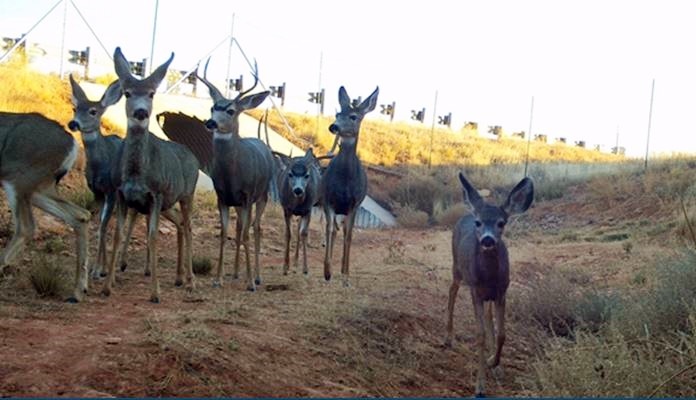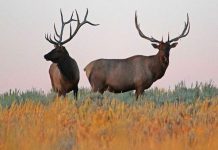
Utah, Dec. 30, 2019 (Gephardt Daily) — The Utah Division of Wildlife Resources on Monday announced the news wildlife crossings that will be built in 2020 in an effort to decrease wildlife/vehicle collisions around the state.
These crossings are typically placed along migration routes to allow deer to reach their different feeding ranges safely, said a news release from the Utah DWR. The structures vary and can include:
-
Overpasses, which allow wildlife to cross over a roadway
-
Bridges, which allow wildlife to cross over a river or ravine
-
Culverts, which allow wildlife to cross under a roadway (the majority of Utah’s wildlife crossings)
-
Fences, which eliminate roadway crossings in certain areas and instead funnel the animals to an overpass or culvert where they can safely cross a road
Utah made history when it completed the first wildlife overpass in the U.S. in 1975 on Interstate 15 near Beaver, the news release said. Since then, around 50 wildlife crossings have been installed throughout the state. The crossings typically take several months to build, depending on the size and weather conditions.
Some projects are still in the preliminary stages, but some of the wildlife crossing projects that will break ground in 2020 are:
-
A double culvert will be installed under I-15 in Baker Canyon near milepost 143, near Cove Fort.
-
Some wildlife fencing will also be installed in the same area from milepost 134 to milepost 145. “There have been 255 reported collisions with mule deer along this stretch of I-15 since 2007,” DWR Assistant Habitat Manager Rhett Boswell said. “We are confident this newest installation will help reduce those.”
-
Wildlife fencing will also be installed on I-15 from milepost 18 to milepost 22 near Leeds, Washington County. There are existing culverts and underpasses in the area.
“We prioritize wildlife crossings as part of our Zero Fatalities goal,” UDOT Natural Resource Manager Matt Howard said. “We recognize that wildlife collisions can lead to serious and life-threatening accidents. In addition, UDOT’s mission is ‘innovating transportation solutions that strengthen Utah’s economy and enhance quality of life.’ Healthy wildlife populations are important for the recreation economy, and are one of the ways in which Utah is unique. We hope to preserve that.”
Around 6,300 deer and elk were confirmed to be killed in vehicle collisions in 2019, but that number is likely much higher, the news release said. Ninety percent of the big game animals killed in wildlife/vehicle collisions are deer, primarily because they are the most abundant big game animal in Utah, but also due to their migratory nature.
“Deer typically follow the same migration routes every year,” Daniel Olson, DWR migration initiative coordinator, said. “Many of those routes include crossing roadways, and the deer will often cross regardless of traffic. However, putting up fences can limit the migration opportunities for deer and other wildlife, and it’s not possible to fence every stretch of highway across the state. So it is important to ensure the passage of wildlife in these areas through the installation of properly placed wildlife crossings.”
Studies have shown there is a 90% reduction in wildlife/vehicle collisions when there is a crossing structure and fence in the area, so DWR has been working with UDOT to identify areas where migration routes cross roadways, so wildlife crossings can be constructed. Both agencies help fund the projects and UDOT oversees the building and maintenance of the structures.
The wildlife overpass on Interstate 80 at Parleys Summit was completed in November 2018, but 2019 was its first full year of use. Preliminary reports show “that it has been very successful in reducing wildlife/vehicle collisions in that area, and trail camera footage showed the overpass being used by several species including deer, elk, moose, bear, coyotes and cougars,” the news release said.
Here are where wildlife crossings were constructed across Utah this year:
Central Utah
-
Construction began for a culvert underpass and a stretch of wildlife fencing across U.S. 40 near milepost 35 north of Strawberry Reservoir. The construction will be completed in spring 2020.
Southeastern Utah
-
A bridge crossing and fencing, primarily for elk, was constructed on Utah Route 191 at milepost 63 near Monticello, San Juan County.
-
Two bridge crossings, primarily for deer, were constructed along the same highway at milepost 65 and 66. A recent study showed that the wildlife crossing at milepost 68 in that area is the most successful wildlife crossing structure in Utah, with an average of 47.5 successful mule deer movements per day.
Southern Utah
-
Additional wildlife fencing was added to the west side of I-15 between Cedar City and Paragonah in Iron County. Several double cattle guards were also installed at a few interchanges in the area. These new installations supplemented several culverts, underpasses, bridges and fencing on the east side of I-15 that had been installed in the area previously.





